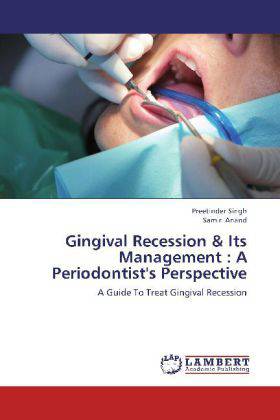
- Afhalen na 1 uur in een winkel met voorraad
- Gratis thuislevering in België vanaf € 30
- Ruim aanbod met 7 miljoen producten
- Afhalen na 1 uur in een winkel met voorraad
- Gratis thuislevering in België vanaf € 30
- Ruim aanbod met 7 miljoen producten
Zoeken
Gingival Recession & Its Management : A Periodontist's Perspective
A Guide To Treat Gingival Recession
Preetinder Singh, Samir Anand
Paperback | Engels
€ 77,95
+ 155 punten
Omschrijving
So, what do we do when a patient walks in complaining of gingival recession and its symptoms? Before undertaking surgical or non-surgical forms of therapy for gingival recession, we must address the etiology of the problem. It goes without saying, that therapeutic interventions will be undermined in the long run if the cause of the problem is not removed. Once the etiology of the condition has been uncovered and addressed, we may proceed to plan a treatment to arrest or reverse the gingival recession. The treatment plan will be based on the severity of symptoms, the goal of the patient and the body of knowledge in the current literature. A patient with minimal symptoms will benefit from education about the etiology along with preventive therapy, whereas a patient with severe sensitivity and esthetic concerns will likely elect to have surgical treatment.
Specificaties
Betrokkenen
- Auteur(s):
- Uitgeverij:
Inhoud
- Aantal bladzijden:
- 244
- Taal:
- Engels
Eigenschappen
- Productcode (EAN):
- 9783659263187
- Uitvoering:
- Paperback
- Afmetingen:
- 150 mm x 220 mm

Alleen bij Standaard Boekhandel
+ 155 punten op je klantenkaart van Standaard Boekhandel
Beoordelingen
We publiceren alleen reviews die voldoen aan de voorwaarden voor reviews. Bekijk onze voorwaarden voor reviews.








